Click to view our Accessibility Statement or contact us with accessibility-related questions


















First Impressions

search
close
Sort by: Newest
keyboard_arrow_down
philip95610
2
Aug 4, 2023
Could it be possible for future european customers to get a european standards power cord ?

Govvie
14
Jun 29, 2023
I'm curious what the tilt angle is on these, it doesn't seem to be far off from upright. Would you recommend stands for these to keep them at a proper height?

Evshrug
4130
Keyboard Club Member
Jun 30, 2023
GovvieThe tilt angle is small… but unlike cone speakers or monitors with substantial wave guides, these are less directional in practice. I would think it best to avoid any instability or vibration, not worth the trade off for angling the drivers more if you have to make that choice. With that said, there are to options for screw mounting points on the speakers, so you could get creative if you want. But it might not be necessary once you demo them.
(Edited)

JesseArt
69
Jun 23, 2023
Thanks for your insights! I'm excited to see how mine will sound whenever they arrive. Regarding reviewer recommendations, I really like Joe N Tell, cheapaudioman, Joshua Valour and of course, Z Reviews on YouTube.

Snodds
19
Jun 16, 2023
Did you get a chance to try them with the optional speaker grilles? Curious if they have any impact on sound or soundstage.
Island-Listener
9
Jun 22, 2023
I could be terribly wrong, but can’t you splice the cable into the output you need like 3.5mm ? Or would that mess with sound quality.

Evshrug
4130
Keyboard Club Member
Jun 23, 2023
Island-ListenerFrom what I’ve seen, most subs have either bare wire connectors or RCA’s. I use an off the shelf 3.5mm to RCA cable. If you’re taking about a subwoofer with a proprietary connector, I suppose you could cut off the source end of the cable and reterminate/splice a 3.5mm connector on the end of it… as long as the subwoofer doesn’t rely on the input for amplification as well, or have other unique power requirements.

Ataemonus
17
Jun 16, 2023
That's great and all, but since the actual product will most likely, by all indications, never be shipped, this review is not helping us, more like teasing us, lol.
Klef
5
Jun 16, 2023
Any updates on potential shipping dates? Feels bad to have pre-ordered these on day one when estimated dates were around March and seeing how it's mid-June already without any signs.
Fastnl
70
Product Development
Jun 16, 2023
KlefFirst wave is en route to our warehouse for fulfillment. The factory will be working throughout the weekend to make more. To set everyone’s mind at ease, we did add a second EV build before our Dev Build to ensure that we have the tightest tolerances and minimal variations for our launch customers.

philip95610
2
Jun 16, 2023
I can suggest to have very good audiophile testers at Qobuz. They are quite influent in french musical world.
Regards
Showing 32 of 35
PRODUCTS YOU MAY LIKE
Trending Posts in Audiophile
AntonetteCBak
Tips for Setting Up a Trading Desk with a Laptop
Creating an efficient and organized trading desk with just a Best laptops for trading requires a strategic approach to maximize productivity and trading success. Whether you’re a beginner or a seasoned trader, having the right setup ensures seamless execution of trades, minimizes errors, and keeps you focused. Below are essential tips to set up a professional trading desk using a laptop. Invest in a high-performance laptop tailored to trading needs. Opt for a model with a fast processor (e.g., Intel i7 or AMD Ryzen 7), at least 16GB of RAM, and a solid-state drive (SSD) for quick data access. Ensure the laptop has multiple ports for connecting peripherals and a high-resolution display for crisp chart visibility. Trading often involves monitoring multiple charts, news feeds, and trading platforms simultaneously. Connect your laptop to external monitors using HDMI or USB-C ports to expand your workspace. Dual or triple monitor setups allow for better multitasking and a...
Nov 21, 2024

abhinavkumar
Company Information in Dubai
Get comprehensive company information in Dubai, including registration requirements, licensing options, and compliance guidelines. Whether you’re exploring free zones, mainland, or offshore setups, our expert resources provide insights to help you make informed business decisions. Navigate Dubai’s business landscape with clarity, from legal requirements to operational support for a successful establishment. For more details:- https://leelainternational.com/
Nov 21, 2024

Leafwise
Show off your carry / bag / case / setup for your Head-Fi gear ✨
As subject, what do y'all carry your gear in for out-and-about/day-to-day and then for travel, if anything other than pockets?
Nov 19, 2024
keegu22
More bass!
I currently have the the HD 6XX, which sound great but, I'm am looking to upgrade the power of the bass as i really enjoy punchy low end EDM music. Any suggestions in the $200-$300 price range would be awesome.
Nov 13, 2024

danielj9
Trying to add Topping LA90D amp to Topping A9D preamp
Any help would be appreciated...I added an amp to my streamer, dac, headphone amp/preamp system and am now not getting any music through the headphone jacks on the preamp - the specifics: Wiim Pro Plus - optical connection to - Topping D50 iii dac - TSR to XLR connection to - Topping A9D headphone amp/preamp (all worked fine as a headphone amp until I tried adding:) - XLR connection to - Topping LA90 D amp. Amp switches are set to bypass, stereo, low gain. In this configuration, I am not getting any music to either my SE or XLR headphone jacks. I made sure I switched the A9D to "preamp" and "xlr" modes. I have no idea what I might be overlooking or missing...any thoughts would be deeply appreciated! Thank you.
Nov 11, 2024

Tremuh
Trying to find new headset
I currently am rocking the beyerdynamic DT 990 Pros and have been for a while now, along with a go xlr! I was trying to see what other headset you guys recommend along with something to replace the xlr? Thank you!
Nov 7, 2024

aiden.miller
Mic not working pc38x
I just got my pc38x in the mail today and the out put is quiet but fine and I'm happy. But the mic will not work when on my Xbox series and I was wondering if this issue can be resolved or if the head set is not compatible with Xbox.
Nov 4, 2024


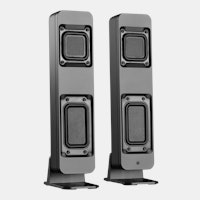
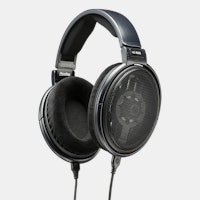
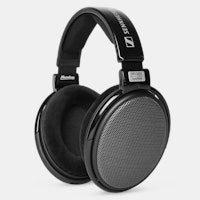
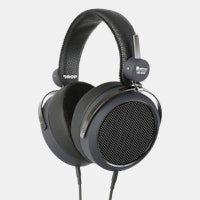
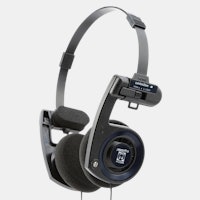
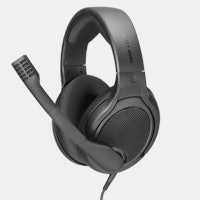
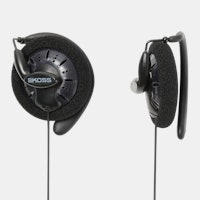
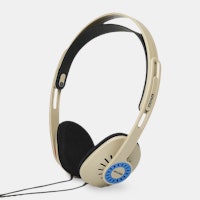
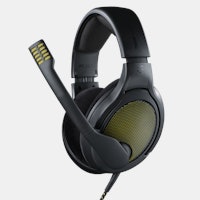
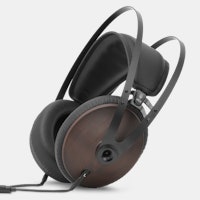

Mids
“The Chain” by Fleetwood Mac is famous for its nice recording/mastering quality and is thus used in many audiophile test playlists. It features many instruments such as bass guitars, falsettos, cymbals, and energetic sound. Those first guitar plucks stand out really strong and create a nice presence, the vocals are a bit pushed back from other instruments (as usual) but they’re not overwhelmed by other instruments. That rhythm bass guitar dominates as the most prominent part of the mix by a little bit, but the (steel?) guitar isn’t far behind. The electric keyboard is probably the quietest part of the mix here, but I still hear it among everything else going on.
“My Home is in the Delta” by Muddy Waters is a great test of mids timbre (and soundstage/recording venue ambiance), and here presents a rich baritone vocal. To give you an idea of volume, I feel like 50% volume from my iPad, when seated about 6.5 feet away (a bit far for optimal stereo separation, to be honest), is loud enough where some of the more powerful drum hits are peaking about as loud as I would want before becoming uncomfortable. 😂 To focus on female vocals under the microscope of a jazz setting, ”Squeeze Me” by Diana Krall, a perpetually popular Audiophile artist, has decent dynamic range (loud/quiet passages). This would be a good test to see if a speaker adds sibilance to a track with plenty of “esses”; the recording itself doesn’t present harsh or magnified sibilance, and neither does the BMR1 add it. “Alone” by Beyries: female vocals and guitar have a strong presence, midrange doesn’t seem recessed. This song is a treat to listen to, the vocalist has both silky and moist voice, and light piano play like this has a good chance of giving goosebumps.
Highs
“The Chain” by Fleetwood Mac For the purposes of evaluating the highs (upper mids and treble), the cymbals and harmonics of the steel guitar have a nice shimmer that feels crisp. Even on Bluetooth, the Cymbals don’t sound sibilant or harsh; I don’t perceive a distortion where “Esss” sounds catch and linger or become particularly magnified. Anne Sophie Mutter offers a violin solo here, backed by the Wiener Pilharmoniker. Violin fundamentals actually have a similar frequency range as the human voice, and we can appreciate that higher mids have a sweet rather than squawky feeling (not to say Mrs. Mutter is anywhere close to the shrill sounds inevitably produced by anyone first learning a string instrument!), but to evaluate treble we will actually listen for the harmonics, which around 4:30 and 9:05 minutes in is evident in our sense of the room and “air” setting the featured violinist apart from the larger Philharmoniker behind her… and Mrs. Mutter indeed is hovering in front of the orchestra, and it’s easy to distinguish the violins, piano, though I wouldn’t say the details are hyper emphasized here. Can I make highs sound shrill and too much? As much as I love the Trinity Session album, harmonicas like to play on the verge of painful, and “Postcard Blues” by Cowboy Junkies features a bit of sibilance in the track’s recording, and the harmonica performer takes a deep breath before letting out a hot blast to announce his instrument’s first notes in this track. And it’s evident in this track with the BMR1 as well… though if I play over Bluetooth, from my iPad with AAC, it does seem to smooth over the clipping a little bit as compared to my most brutally honest headphones.
Bass
“Destination Bass” by Bass Dominator is in this section for reasons you can guess, haha! Pretty good bass punch sensation (midbass), and by itself the BMR1 sounds fun when in 2.0 mode. But I know this track, and I know the rumble reaches deeper if I had a sub attached - this would be a good track to try again with a subwoofer later. EDIT: Later, I hooked up my home theater subwoofer to the “AUX Output” of the BMR1, and yep it plays nice with a 2.1 configuration. The bass is better integrated in “The Sea Liner MK1” by Archy Marshall, however. “Them Changes” by Thundercat. Kind of a simple song, so it needs good emphasis on the bass foundation. Plenty of bass guitar to groove to, falsetto voices not too recessed, I can also hear the occasional “Sci-Fi spacey” effects. I compared to listening with my grell TWS1X with my personal hearing EQ/Preference curve applied, and what I could hear on the grells but not the BMR1 was what you might expect: sub bass rumble, however without trying this comparison, and with 2.0 mode activated, the BMR1 don’t feel bass light or incomplete despite the absence of sub bass. “Angel” by Massive Attack, a staple on so many “bass test” playlists. No, the 2” drivers and passive radiators don’t play the earliest and quietest bass notes at the beginning of the song, but the ominous “duuuuuuum, but-dut-dut-duuuuuum” comes in and does a pretty good job representing the song. If you don’t have a (good!) subwoofer, you will want to make sure the BMR1 are set to the 2.0 mode so that the midbass has a little more rumble to it, and you will be able to feel the speaker vibrating your desk. Feeling my desk vibrate, I wanted to try out my favorite discovery of last year. “Neru (Sound Bath)” by Calla Koru (and other sound bath music like it, usually found in huge playlists) features natural trickling water sounds and reverberations from a really big gong, which washes over you and triggers a zen-like meditative state. Last year, I discovered it allows me to push other thoughts from my head without stimulating new ones to take their place. Sitting about a foot and a half away from my pair of BMR1, I can feel the vibrations as well as hear them, and it’s a pleasant sensation.
Impact
“Sky Trees” by Solar Fields is an electronica track that you can feel… not really intended to relax you, but you can feel the binaural beats physically with literal “good vibes.” “Drum Trip” by Rusted Root (from my local Pittsburgh!) sounds very frenetic but the clarity and good dynamics of presenting the quieter sounds among the fast and heavy drum beat helps it not sound like mish-mash mud bath.
Soundstage / Ambiance Sometimes, Andrew Bird just likes to have fun and play around with sounds, and “The Canyon Wants to Hear C-Sharp” delivers on the promise of the title. Here, there is a real good sense of the echoing canyon among the subtle sound of trickling water. Sounds “big,” the BMR1 seem to do a good job of disappearing and making the performance feel like a larger venue. “And the Angels Sing” by Jacintha came on next, a super polished and refined Audiophile recording. The sound of the performance “room” from the reverb is present, adding some depth and distance to the reproduction, and the cello is more present than with other small speakers. Again, “Alone” by Beyries has pretty good soundstage, the sound seems to be from a bigger source than the speakers.
Separation / Forgiveness
“Contact” by Daft Punk (and the rest of the “Random Access Memories” album!) is super well recorded and mastered. The static at 2:30 is handled without harshness, and the cymbals splash but in a pleasant way, and the bass guitar brings a nice “horse trot” rhythm to the proceedings. Like when contrasted before against the grells, the sub bass isn’t there, but the majority of the song is and, again, if you didn’t know, you would be pretty happy (but you can always add a sub, again to truly get a worthwhile sub experience I would recommend a larger woofer, the BMR1’s 80 Hz bottom roll off is good enough that a cheap subwoofer wouldn’t add much depth or match the clarity of the speakers). This song is also a bit repetitive, and by the end (listened 3 times in a row) I’m kind of glad it’s over 😅 On the flip side, “Started from the Bottom” by Drake is a BAD master, to see how the BMR1 handles clipping and distortion (no comments on the artistic intent). You can hear the distortion in the recording right at the start to judge if it’s harsh, mellow, or hidden… It’s audible and tickles a little, so it definitely reveals the recording/mixing flaws, but it would be worse to listen to if the BMR1 treble was boosted or brittle. “Demons” by Imagine Dragons is also a horribly mastered recording, and it sounds awful on the BMR1 due to grainy, loud bass and distorted drum impacts 😅 So, the BMR1 doesn’t do that lo-fi forgiveness of bad recordings haha. But I hear the drums distortion on this track with most speakers/headphones, including the in-ceiling speakers at my local grocery, so again this is just the nearfield monitors being able to show recording flaws. The clarity seems to be enough that it doesn’t forgive the distortion sins in the recordings of “Demons” or “Started from the Bottom,” but you would need a very wet muddy mess to smooth those out, what the clarity does do is give a nice sense of the ambiance of well-mastered stuff like the ambiance of the performance hall with orchestral work. Overall impression The BMR1 has a tasteful touch of midbass and highs that offer playfulness without reaching aggressive levels, pleasant mids that are not shouty, with good detail that is able to reward decently mastered music, and they were designed to favor engagement and musicality rather than a dry, clinical sound. These are not thin and anemic sounding speakers! Compared to typical headphones, these have superior soundstage capabilities in a shareable, comfortable nearfield speaker format. Subjective preferences will vary, and this post does not represent the one and only truth, but after living with a pair of BMR1 for a short while, I think these are good for enjoyment and fun (like, in 2.0 mode, there is a nice sense of bass guitar, mids have body). I’m looking forward to reading what your impressions will be! Written by @Evshrug.